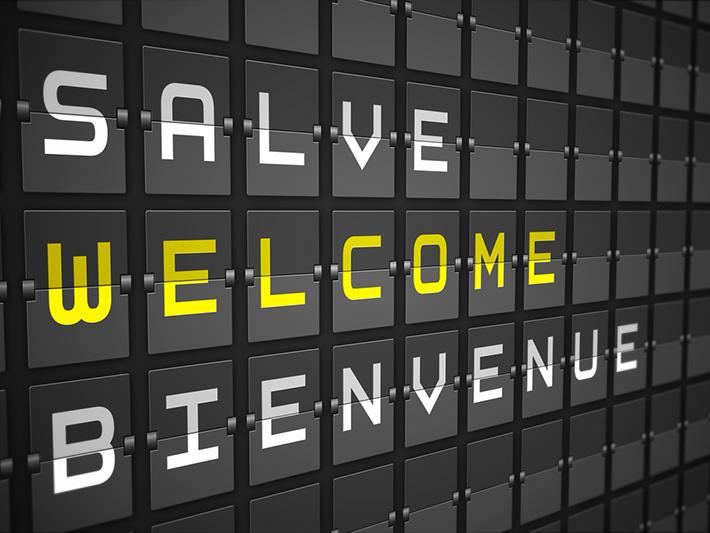
Making global academic connections from your desk

You may also like
When someone says “internationalisation”, do you imagine senior leaders signing memorandums of understanding around photographers? Or students boarding planes to begin their Erasmus exchange? The truth is that the heavy lifting in higher education internationalisation and transformative global work is done from your desk. You don’t need a grand title or travel budget to build global bridges. As an early-career academic, you can shape international engagement from your computer.
This guide is for early-career academics – lecturers, PhD candidates and postdocs across all disciplines, whether in STEM, the humanities or professional fields – who want to build global ties without waiting for institutional strategies to catch up. Here, “internationalisation” refers to cross-border teaching or research collaboration without the need for travel or formal agreements, while “impact” means tangible results such as joint lessons, collaborative research outputs or ongoing academic exchange.
In over a decade working in Armenian higher education, I’ve seen how academics build international networks not through grand strategies or perfect systems but by tapping into what they already have: local context, smart digital tools and authentic peer connections. These efforts are often more agile, genuine and impactful than top-down initiatives. We use academic networks such as Scholars at Risk, Cost Actions and EIT matchmaking calls. A grant consortium is not the only way to collaborate across borders.
- Five tips for building healthy academic collaborations
- Researcher speed-dating: developing strategic collaborations with international partners
- Helping doctoral students build international connections
Collaboration begins when you trade your expertise and become useful. A single low-key offer can be the beginning of ongoing exchanges such as research advice, mentorship, even long-term teaching partnerships.
If you are beginning your journey in academia, here is a guide to how you can create global impact, even if you lack global resources.
1. The networking secret no one tells you
Real collaboration rarely starts with paperwork. We’ve all seen glossy international partnership agreements that are launched with great fanfare only to be quietly forgotten once the photos are taken. But do they make a connection? The most valuable international assets are the business cards in your drawer, half-forgotten LinkedIn connections and buried email threads. Last year, one of our engineering professors dug out a 15-year-old business card from his PhD days in Poland. What began as an awkward call between old colleagues turned into monthly virtual labs where our students accessed Polish equipment remotely.
Even if you're just starting out, you can reconnect with someone from a webinar or a LinkedIn conversation. Offer insight, a teaching exchange or a shared discussion. Begin with shared value, not just a request.
2. From virtual meetings to real collaboration
Reconnecting is only the beginning. The real value comes from taking that connection and making it something collaborative. You do not need to have a fancy platform or entire grant proposal to start. An example is when we worked with a technical university in Germany on an artificial intelligence project. Their students needed to work with real data and ours were developing algorithmic models without hands-on experiments. So, we made it simple: the Armenian students filmed short videos on their phones about energy issues in their communities and the German group provided simulation tools. What came out of this was more than just a classroom exchange; it became a real co-design experience.
3. Your constraints can be your strengths
As a junior academic, you may not have a title that conveys the scope of your expertise. But you can work with what you do have and create something impactful.
As part of our project on the circular economy, our group didn’t wait for advanced platforms; we acted upon local assets. We used specific Soviet-era factories as living case studies; we included members of the community in the project management; and we even curated discussions with students as a group assignment on one of Armenia's most popular messaging applications, Viber, with over 90 per cent engagement.
It is essential to first recognise what you have that others want – whether it's contextual knowledge, regional data or rare methods – and then offer it up!
4. Trade skills, not paperwork
We often hear that “networking is everything” in academia. But let’s be honest – how do we reach out to the people we’ve met along the way? One thing I’ve noticed is that when you offer something upfront – your time, your insight, your experience – you open the door to ask for something in return later. Don’t start with a request. Start by offering something useful: no forms, no grants, no official titles – just mutual benefit. Some of the most productive partnerships I’ve seen didn’t begin with strategy. They began with a favour. Always open with what the other party will gain. Position yourself as a solution to their challenges.
But building genuine partnerships takes more than swapping contact details. Whether you’re reconnecting with someone or reaching out for the first time, what matters most is how you approach them. Start with people working on similar topics, peers you’ve encountered at webinars, workshops or even on academic Twitter or LinkedIn. Look through your own bookmarks or reading list. Who wrote that interesting paper you cited last month? Whose comment during a panel stuck with you? These are the people to approach.
You don’t need an invitation to be helpful. Offer something relevant: a teaching resource, a guest session, a dataset. That one message can open doors. The key is to lead with usefulness. Position yourself as someone who adds value, and you’ll often be surprised by who responds.
Global academic impact doesn’t require permission or perfection. Start where you are, with what you’ve got. Partnerships don’t need to be grand or formal. What begins small can grow surprisingly quickly.
Lilit Ghazaryan is the director of the department of internationalisation and development at the National Polytechnic University of Armenia.
If you would like advice and insight from academics and university staff delivered direct to your inbox each week, sign up for the Campus newsletter.


